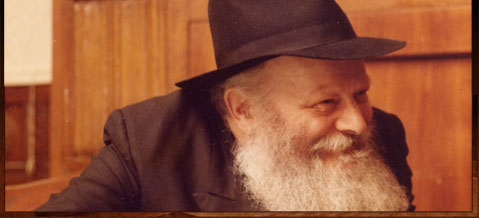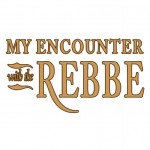Mr. Avrohom Hilsenrad
My parents were both brought up in chasidic families – my father’s family was Vizhnitz and my mother’s Ger – and both came to America as children in 1920. I was born in 1941, and grew up in Flatbush, in an area that was almost entirely Jewish, but barely had a minyan of Shabbat-observant Jews.
My father, Zalman Aryeh Hilsenrad, began working for the Orthodox Union (OU) as a young man, and a couple of years before I was born, he became the first executive director of the organization. In a time when many Jews were uninterested in the old ways and were becoming more Americanized, he worked to revitalize observant Judaism.
In the 1940s and ‘50s there weren’t many chasidic courts one could attend in New York, and my father would go to many of them, but his closest connection was with Lubavitch.
For as long as I can remember, my father had a picture of the Previous Lubavitcher Rebbe on his desk, and he would visit him regularly.
In 1949, when I was eight years old, my father took me along with him to a meeting with the Previous Rebbe.
Although my father was fluent in Yiddish, he had a hard time understanding the Previous Rebbe. As he explained to me, the Rebbe had a speech impediment, which was in some way connected to the suffering he had endured under the communists in Russia. Therefore, the current Rebbe was also present in order to act as an interpreter and to facilitate the conversation with his father-in-law. I didn’t understand a word of Yiddish, and my father translated for me.
When we came into the room, the Previous Rebbe asked me something.
“The Rebbe wants to know if you wear tzitzit,” said my father. Tzitzit are the fringes we are commanded to wear on the corners of any four-cornered garment.
“Yes,” I replied. In fact, in the school that I went to at the time, I was probably the only boy who wore tzitzit. So it was actually somewhat unusual, and getting someone to continue wearing was an achievement.
“Do you know how many strings there are on the garment?”
I didn’t know, so the Previous Rebbe prompted me: “Well, each corner has eight strings, and there are four corners. How much is eight times four?”
“Thirty-two.”
“Ahh,” he said, and then he went on to draw out a message about the importance of wearing tzitzit. Lev, the Hebrew word for “heart,” has the numerical value of thirty-two. This meant, as he put it, that “if you want to always have a yiddishe lev,” that is, a Jewish heart, “make sure to always wear tzitzit!”
You can be sure that after hearing that, I never missed a single day of wearing tzitzit. Even if others did not, I knew that if I kept on wearing them, I would be in good shape.
After the passing of the Previous Rebbe in 1950, my father continued to visit the new Rebbe, probably a few times a year, to discuss his personal and philanthropic activities, as well as his writing. For about twenty years, my father wrote a weekly column for the Jewish Press, and I know that he consulted the Rebbe on what ideas he should emphasize, and how to approach certain issues. Later, when he was thinking about publishing his columns in a book, the Rebbe encouraged him to do so, and helped him choose a title: The first volume was published as My Soul Thirsts.
At fifteen, I went off to Baltimore to study in the Ner Yisroel yeshivah, so I rarely went along with my father to these meetings. When I was back home for the holidays, though, I would often walk to Crown Heights to attend the Rebbe’s public gatherings. It was an exciting place to be, and I would enjoy the atmosphere, while watching the Rebbe speak and the chasidim sing.
Although I was learning in a non-chasidic, Lithuanian-style yeshivah, I was always tolerant of other kinds of Jewish communities and schools of thought. Actually, the head of my yeshivah, Rabbi Yaakov Yitzchok Ruderman, himself came from a Chabad family. I was also familiar with various other chasidic courts and learned many chasidic texts.
Still, Ner Yisrael was very much of the Lithuanian orientation, which generally wasn’t too fond of chasidic thought and could sometimes be disparaging of chasidim.
I must have once said something along those lines because on one occasion, when I accompanied my father to an audience with the Rebbe, he first took me to the study hall in 770, which was across the hall from the Rebbe’s office.
He wanted to show me that there were great Torah scholars among the chasidim. While we were there, he introduced me to one of the students, an impressive young man named Rabbi Avraham Shemtov, and we had a long conversation.
When I was about twenty, I went along with my father for another audience with the Rebbe. I believe my father mentioned the attitude towards chasidic thought that I had been encountering in my yeshivah.
The Rebbe asked me whether I had any questions for him, and I did.
“What is the difference between Chasidus and Mussar?” I asked. Mussar, meaning ethics, referred to an approach towards spiritual development that was popular in Lithuanian Jewish circles.
The Rebbe told me that he would answer by way of a parable. Both schools of thought work to improve a person’s character, which involves ridding them of negative character traits, but in different ways.
“Let’s say you are outside, wearing a heavy overcoat,” said the Rebbe. He spoke in Yiddish, without any theatrics, in his straightforward, even-keeled manner. “When a wind comes and tries to blow your overcoat off, you hang onto the coat even more tightly. This is similar to the Mussar approach. It tries to wrest those bad traits away from you, but sometimes you just end up holding on to them with even more strength. Chasidus is like sunshine: When the sun warms you up, you want to remove your coat. Learning Chasidus will warm you up spiritually, and then you will shed your undesirable traits on your own.”
Of course, there are many types of Mussar. There are the classical works of Jewish ethics, like Chovot Halevavot and Mesilat Yesharim; there is the Slabodka school, which focuses on the great potential that every human possesses; and then there is a tougher approach, like that of Novardok. This approach was more common in the kind of yeshivah I attended. I recall that one teacher used to yell at us about the dangers of worldly temptation: “You think an ice-cream costs a nickel? It can cost you the World to Come!”
Chasidus has a more gentle and positive means of persuasion. For our generation, I believe the Rebbe was saying, it is also a more effective method for encouraging people to go on the right path.
Mr. Avrohom Hilsenrad resides in Baltimore where he previously worked as a city planner, as well as a budget official for the State of Maryland. He was interviewed in Baltimore in February, 2024.





